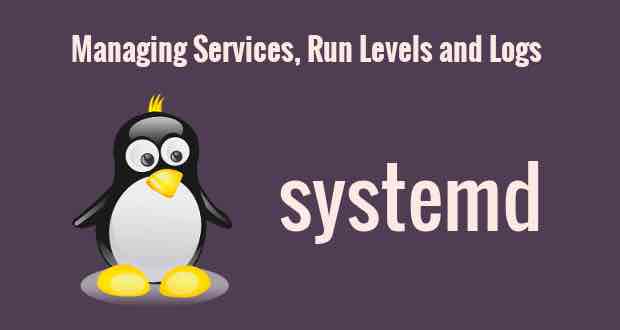由来
根据我了解到,历史上,Linux 的启动一直采用init进程。
下面的命令用来启动服务。
1
2
3
$ sudo /etc/init.d/apache2 start
# 或者
$ service apache2 start
这种方法有两个缺点
启动时间长。init进程是串行启动,只有前一个进程启动完成,才会启动下一个进程。
启动脚本复杂。init进程只是执行启动脚本,不管其他事情。脚本需要自己处理各种情况,这往往使得脚本变得很长。
Systemd 概述
Systemd 就是为了解决解决这些问题而诞生的。它的设计目标是,为系统的启动和管理提供一套完整的解决方案。
根据 Linux 惯例,字母d是守护进程(daemon)的缩写。Systemd 这个名字的含义,就是要守护整个 Linux 系统。
Systemd作者
(上图为 Systemd 作者 Lennart Poettering )
使用了 Systemd,就不需要再使用init了。Systemd 取代了init,成为系统的第一个进程(PID = 1),其他进程都是它的子进程。
上面命令用于查看本机器 Systemd 的版本。
系统管理
Systemd 并不是一个命令,而是一组命令,涉及到系统管理的方方面面。
systemctl
systemctl是 Systemd 的主命令,用于管理系统。
1
2
3
4
5
6
7
8
9
10
11
12
13
14
15
16
17
18
19
20
# 重启系统
$ sudo systemctl reboot
# 关闭系统,切断电源
$ sudo systemctl poweroff
# CPU停止工作
$ sudo systemctl halt
# 暂停系统
$ sudo systemctl suspend
# 让系统进入冬眠状态
$ sudo systemctl hibernate
# 让系统进入交互式休眠状态
$ sudo systemctl hybrid-sleep
# 启动进入救援状态(单用户状态)
$ sudo systemctl rescue
systemd-analyze
systemd-analyze命令用于查看启动耗时
1
2
3
4
5
6
7
8
9
10
11
# 查看启动耗时
$ systemd-analyze
# 查看每个服务的启动耗时
$ systemd-analyze blame
# 显示瀑布状的启动过程流
$ systemd-analyze critical-chain
# 显示指定服务的启动流
$ systemd-analyze critical-chain atd.service
hostnamectl
homenamectl命令用于查看当前主机的信息
1
2
3
4
5
# 显示当前主机的信息
$ hostnamectl
# 设置主机名。
$ sudo hostnamectl set-hostname rhel7
timedatectl
timedatectl命令用于查看当前时区设置
1
2
3
4
5
6
7
8
9
10
# 查看当前时区设置
$ timedatectl
# 显示所有可用的时区
$ timedatectl list-timezones
# 设置当前时区
$ sudo timedatectl set-timezone America/New_York
$ sudo timedatectl set-time YYYY-MM-DD
$ sudo timedatectl set-time HH:MM:SS
loginctl
loginctl命令用于查看当前的登陆用户
1
2
3
4
5
6
7
8
# 列出当前session
$ loginctl list-sessions
# 列出当前登录用户
$ loginctl list-users
# 列出显示指定用户的信息
$ loginctl show-user ruanyf
Unit
含义
Systemd 可以管理所有系统资源。不同的资源统称为Unit(单位)
Service unit:系统服务
Target unit:多个 Unit 构成的一个组
Device Unit:硬件设备
Mount Unit:文件系统的挂载点
Automount Unit:自动挂载点
Path Unit:文件或路径
Scope Unit:不是由 Systemd 启动的外部进程
Slice Unit:进程组
Snapshot Unit:Systemd 快照,可以切回某个快照
Socket Unit:进程间通信的 socket
Swap Unit:swap 文件
Timer Unit:定时器
systemctl list-units命令可以查看当前系统的所有 Unit
1
2
3
4
5
6
7
8
9
10
11
12
13
14
# 列出正在运行的 Unit
$ systemctl list-units
# 列出所有Unit,包括没有找到配置文件的或者启动失败的
$ systemctl list-units --all
# 列出所有没有运行的 Unit
$ systemctl list-units --all --state= inactive
# 列出所有加载失败的 Unit
$ systemctl list-units --failed
# 列出所有正在运行的、类型为 service 的 Unit
$ systemctl list-units --type= service
Unit 状态
systemctl status命令用于查看系统状态和单个 Unit 的状态
1
2
3
4
5
6
7
8
# 显示系统状态
$ systemctl status
# 显示单个 Unit 的状态
$ sysystemctl status bluetooth.service
# 显示远程主机的某个 Unit 的状态
$ systemctl -H root@rhel7.example.com status httpd.service
除了status命令,systemctl还提供了三个查询状态的简单方法,主要供脚本内部的判断语句使用
1
2
3
4
5
6
7
8
# 显示某个 Unit 是否正在运行
$ systemctl is-active application.service
# 显示某个 Unit 是否处于启动失败状态
$ systemctl is-failed application.service
# 显示某个 Unit 服务是否建立了启动链接
$ systemctl is-enabled application.service
Unit 管理
对于用户来说,最常用的是下面这些命令,用于启动和停止 Unit(主要是 service)
1
2
3
4
5
6
7
8
9
10
11
12
13
14
15
16
17
18
19
20
21
22
23
24
25
26
# 立即启动一个服务
$ sudo systemctl start apache.service
# 立即停止一个服务
$ sudo systemctl stop apache.service
# 重启一个服务
$ sudo systemctl restart apache.service
# 杀死一个服务的所有子进程
$ sudo systemctl kill apache.service
# 重新加载一个服务的配置文件
$ sudo systemctl reload apache.service
# 重载所有修改过的配置文件
$ sudo systemctl daemon-reload
# 显示某个 Unit 的所有底层参数
$ systemctl show httpd.service
# 显示某个 Unit 的指定属性的值
$ systemctl show -p CPUShares httpd.service
# 设置某个 Unit 的指定属性
$ sudo systemctl set-property httpd.service CPUShares = 500
依赖关系
Unit 之间存在依赖关系:A 依赖于 B,就意味着 Systemd 在启动 A 的时候,同时会去启动 B
systemctl list-dependencies命令列出一个 Unit 的所有依赖。
1
$ systemctl list-dependencies nginx.service
上面命令的输出结果之中,有些依赖是 Target 类型(详见下文),默认不会展开显示。如果要展开 Target,就需要使用--all参数。
1
systemctl list-dependencies --all nginx.service
Unit 的配置文件
概述
每一个 Unit 都有一个配置文件,告诉 Systemd 怎么启动这个 Unit。
Systemd 默认从目录/etc/systemd/system/读取配置文件。但是,里面存放的大部分文件都是符号链接,指向目录/usr/lib/systemd/system/,真正的配置文件存放那个目录。
systemd enbale命令用于在上面两个目录之间,建立符号链接关系。
1
2
3
$ sudo systemctl enable custom.service
# 等同于
$ sudo ln -s '/usr/lib/systemd/system/custom.service' '/etc/systemd/system/multi-user.target.wants/custom.service'
如果配置文件里面设置了开机启动,systemd enable命令相当于激活开机启动。
与之对应的,systemd disable命令用于在两个目录之间,撤销符号链接关系,相当于撤销开机启动。
1
$ sudo systemctl disable custom.service
配置文件的后缀名,就是该 Unit 的种类,比如sshd。socked。如果省略,Systemd 默认后缀名为.service,所以sshd会被理解成sshd.service。
配置文件的状态
systemctl list-unit-files命令用于列出所有配置文件。
1
2
3
4
5
# 列出所有配置文件
$ systemctl list-unit-files
# 列出指定类型的配置文件
$ systemctl list-unit-files --type= service
这个命令会输出一个列表。
1
2
3
4
5
6
$ systemctl list-unit-files
UNIT FILE STATE
chronyd.service enabled
clamd@.service static
clamd@scan.service disabled
这个列表显示每个配置文件的状态,一共有四种。
enabled:已建立启动链接
disabled:没建立启动链接
static:该配置文件没有[Install]部分(无法执行),只能作为其他配置文件的依赖
masked:该配置文件被禁止建立启动链接
注意,从配置文件的状态无法看出,该 Unit 是否正在运行。这必须执行前面提到的systemctl status命令。
1
$ systemctl status bluetooth.service
一旦修改配置文件,就要让 Systemd 重新加载配置文件,然后重新启动,否则修改不会生效。
1
2
$ sudo systemctl daemon-reload
$ sudo systemctl restart httpd.service
配置文件的格式
配置文件就是普通的文本文件,可以用文本编辑器打开。
systemctl cat命令可以查看配置文件的内容。
1
2
3
4
5
6
7
8
9
10
11
$ systemctl cat atd.service
[ Unit]
Description = ATD daemon
[ Service]
Type = forking
ExecStart = /usr/bin/atd
[ Install]
WantedBy = multi-user.target
从上面的输出可以看到,配置文件分成几个区块。每个区块的第一行,使用方括号表示的区别名,比如[Unit]。
注意,配置文件的区块名和字段名,都是大小写敏感。
每个区块内部是一些等号连接的键值对。
1
2
3
4
5
[ Section]
Directive1 = value
Directive2 = value
. . .
注意,键值对的等号两侧不能有空格
Target
启动计算机的时候,需要启动大量的 Unit。如果每一次启动,都要一一写名本次启动需要哪些 Unit,显然非常不方便。Systemd 的解决方案就是 Target。
简单说,Target 就是一个 Unit 组,包含许多相关的 Unit。启动某个 Target 的时候,Systemd 就会启动里面所有的 Unit。从这个意义上说,Target 这个概念,跟 Target 的作用很类似。不同的是,RunLevel 是互斥的,不能有多个 RunLevel 同时启动,但是多个 Target 可以同时启动。
1
2
3
4
5
6
7
8
9
10
11
12
13
14
15
16
# 查看当前系统的所有 Target
$ systemctl list-unit-files --type= target
# 查看一个 Target 包含的所有 Unit
$ systemctl list-dependencies multi-user.target
# 查看启动时的默认 Target
$ systemctl get-default
# 设置启动时的默认 Target
$ sudo systemctl set-default multi-user.target
# 切换 Target 时,默认不关闭前一个 Target 启动的进程,
# systemctl isolate 命令改变这种行为,
# 关闭前一个 Target 里面所有不属于后一个 Target 的进程
$ sudo systemctl isolate multi-user.target
Target 与传统 RunLevel 的对应关系如下。
1
2
3
4
5
6
7
8
9
Traditional runlevel New target name Symbolically linked to...
Runlevel 0 | runlevel0.target -> poweroff.target
Runlevel 1 | runlevel1.target -> rescue.target
Runlevel 2 | runlevel2.target -> multi-user.target
Runlevel 3 | runlevel3.target -> multi-user.target
Runlevel 4 | runlevel4.target -> multi-user.target
Runlevel 5 | runlevel5.target -> graphical.target
Runlevel 6 | runlevel6.target -> reboot.target
它与init进程的主要差别如下:
默认的 RunLevel (在/etc/inittab文件设置)现在被默认的 Target 取代,位置是/etc/systemd/system/default.target,通常符号链接到graphical.target(图形界面)或者multi-user.target(多用户命令行)。启动脚本的位置 ,以前是/etc/init.d目录,符号链接到不同的 RunLevel 目录 (比如/etc/rc3.d、/etc/rc5.d等),现在则存放在/lib/systemd/system和/etc/systemd/system目录。配置文件的位置 ,以前init进程的配置文件是/etc/inittab,各种服务的配置文件存放在/etc/sysconfig目录。现在的配置文件主要存放在/lib/systemd目录,在/etc/systemd目录里面的修改可以覆盖原始设置。

